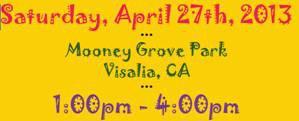Having been born in the Chinese Year of the Horse, I plan to take January 31, 2014 big. This link gives ideas for a delightful party. Thank you, fizzyparty.com and Happy New Year everyone!
Tuesday, January 28, 2014
Wednesday, January 22, 2014
Tools for Writing an Essay
Cubing
a Topic - a guest post by Nikolas Baron
(Nikolas works for GRAMMARLY, a commercial site offering interesting tools for writers. He's developing guest blogs and is fun to correspond with.)
Coming up with a topic is usually the easy part of writing any essay. We all have a pretty good idea of what interests us and what we want to write about. Of course, when we sit down to actually write the essay, we hit a wall. After all, what do we need to know about our topic? Where do we even begin learning what we need to know about our topic? Blech. Even looking at those questions overwhelms us. In my work for Grammarly, I study the tools people use to become better writers, and I think there are a number of underused techniques for tackling a topic, which any writer would be well-suited to add to his or her toolbelt. One such technique is “cubing” a topic, which involves the writer looking at his or her topic from six sides (like a cube), the culmination of which is an extremely informed perspective on whatever the writer has chosen to write about.
If you're an educator, cubing is
an extremely valuable tool for your students, especially when they haven't
given as much thought to their topic as they should before they start writing
about it. Traditionally, to cube, students were given a blank cube and asked to
write their response quickly on each side. Personally, I think cubing works
best when you have your students take each “side” of the cube in order, giving
them ample time to consider their topic from that angle and write about it. For
best results, I would recommend spending ten to fifteen minutes on each side.
While this take on cubing may lose some of the flair of the original shape, it
does give writers of all skill levels an easy technique for them to deeply
examine their topic.
Let's get started.
Side 1 – Description:
For this side, have your students describe their topic the best as
they can, using everyday words and descriptions.
Side 2 – Compare: Then,
ask your students to compare their topic to something similar. What are the two
topics' similarities or differences?
Side 3 – Associate: Ask
your students what else their topic makes them think of. What do they associate
with their topic?
Side 4 – Analyze: At this
point, your students will be getting into the real meat of the topic. This side
requires them to break their topic into specific components, describing
causality, relationships, and effects.
Side 5 – Application:
How important is the topic to the real world? Is it functional? Abstract? What
sort of relationship does it have to people? Environment? Culture? Ask your
students: if they were to remove the topic from existence, would anything
happen?
Side 6 – Argument: This
final side is the most difficult: asking students to argue for or against their
topic. How important is it? Do they agree with it? Do they disagree with it?
Within this side, they must also start to develop their argument with
supporting facts. Why do they agree with it? Why do they disagree with it?
You might have noticed that in
the above list, Side 1 is a relatively simple request, while Side 6
requires much more information and
attention. The idea behind cubing is a gradual progression from the beginning
of a topic (the surface, physical description) to the inner depths (value
judgment), so that by the end of the exercise, the writer will have a firm
enough grasp on his or her topic that he or she will be able to begin writing a
piece with the confidence that comes only from time and deep thought about a
particular subject.
Of course, once your students
have a great, well-developed topic, their essay will really start to shine. If
you want them to really polish it, however, they'll want to be sure that it
looks good on a technical level, and that's where tools like Grammarly.com come
in. Over at Grammarly, we offer an extremely sophisticated grammar check that
examines a piece for over 250 common grammatical errors. By combining a
well-thought-out topic with a strong technical foundation, the end result is an
excellent essay that would make any teacher proud.
--
Labels:
children's creative writing,
essay writing
Thursday, April 25, 2013
The Perfect Saturday for Kids!
I am delighted to be one of the featured authors for the Tulare County
Día de los Niños/ Día de los Libros!
April 27, 2013
Día de los Niños/ Día de los Libros
1:00 - 4:00pm, Mooney Grove Park, Visalia
Book Giveaway! Mariachi Music! Roping Demonstration! Ballet Folklorico! Guitar Music!
A day you don't want your children to miss. See you there.
April 27, 2013
Día de los Niños/ Día de los Libros
1:00 - 4:00pm, Mooney Grove Park, Visalia
Book Giveaway! Mariachi Music! Roping Demonstration! Ballet Folklorico! Guitar Music!
A day you don't want your children to miss. See you there.
Labels:
book giveaway,
Children's Day,
multicultural
Monday, March 18, 2013
Enriching Mathematics Learning . . .
Children learn by looking, listening and touching.
A good picture book touches all three. - Virginia W. Pilegard
I explain a bit about the books I write in this video from the February, 2013, AAUW Author's Day at the Madera County Library.
AAUW Author's Day at the Madera County Library. http://www.youtube.com/watch?NR=1&v=bBwYWeQD2ME&feature=endscreen
A good picture book touches all three. - Virginia W. Pilegard
I explain a bit about the books I write in this video from the February, 2013, AAUW Author's Day at the Madera County Library.
AAUW Author's Day at the Madera County Library. http://www.youtube.com/watch?NR=1&v=bBwYWeQD2ME&feature=endscreen
Thursday, March 7, 2013
TOOTH FAIRY IN A JAR?
My latest mathematical adventure manuscript stars a young tooth fairy learning to count change. I'm having a grand time reviewing sketches from four very different artists. No wonder this post on Facebook caught my fancy. Savor with me the magic and wonder of pretending.
FAIRIES IN A JAR
(click on the link above, then click arrow top right to open directions)
FAIRIES IN A JAR
(click on the link above, then click arrow top right to open directions)

Thursday, February 28, 2013
FOR GIRLS WHO LONG TO WRITE
“Avoid sensational novels. The habit of reading trashy
novels will prove fatal to taste and grace in writing.” --Wakefield, Priscilla. THE DELINEATOR. Vol. LXVI, August, 1905
Researching for another project, I ran across this wonderful
article in one of my husband’s grandmother’s magazines. Funny how guidance for young writers, written
in their great, great grandmother’s day, is still relevant! As the year 2013 puts us well past 1905 copyright
restrictions, I’m able to share:
. . . I have tried to
point out to . . . girls that talent is God’s gift. It is not to be “crushed down.** It is a duty to use and develop it, but
nothing can be done without hard work and perseverance. Talent is long
patience. The way to prove any talent is by effort, struggle, practice—sometimes
by discouragement, disappointment and willingness to try again.
. . .See your characters in your mind’s eye; live with them;
learn their points of view. Write your
story and put it away. Read it over (later) as though it were written by
someone else, and judge of it accordingly.
If you are fair and just to yourself you will see where it needs cutting
or changing.
. . .Facility and style in writing are to be won only by
hard work. Even Robert Louis Stevenson, the master of style, plodded, struggled
and sometimes threw aside pen and paper and went out in his garden to dig when
he felt discouraged. He was very exact about choosing expressive words. After a
turn in his garden he went back refreshed to his literary labors. But there
were weeks and months of ill-health for him when going out of doors was
impossible. One of the most pathetic as well as inspiring pictures in one’s
mind of Stevenson is of when, in spite of illness and suffering, he sat up in
bed, writing bravely and never giving up. Stevenson has told us how he trained
himself in grace and skill in writing. In his youth he was pointed out as an idler, yet he carried two books—one to
read, one to write in. As he walked, his
mind was busy fitting what he saw with appropriate words. When he sat by the
roadside he would read or note down the features of the scene. Thus he lived
with words.
** (In 1905 society was still eager to “crush” anything
that led young women away from hearth and home. In this same issue, another
article rejoices, “with the ballot in the hands of the women of Idaho, great
results are looked for . . .”)
I love Priscilla’s words. Although I suspect most of us have already read too many sensational
novels, living with words, struggling, practicing and persevering are about the best advice anyone can pass along to young girls who long to write.
Friday, April 6, 2012
Getting It Right At Ninety--Elnora King
Spent an incredible evening celebrating writing teacher Elnora King's ninetieth birthday. I have eight mathematical adventure picture books in publication, two of which are listed as core literature for mathematics by the California State Department of Education, because this woman chose to accept me into her class. She suffered through my love of adjectives and adverbs, my bouts of drama and flouncing. She encouraged me through eighteen rejections.When I called to tell her I'd won a national contest with my little manuscript, she recognized "the voice" immediately. She'd received many such calls. When I handed her a copy of my first PUBLISHED BOOK with her name listed in the dedication, she placed it on a shelf beside many other books nurtured by and dedicated to her.
My fellow classmates and I walked into her regular Thursday night group. The plan was for us to gather at a neighbor's and walk in together, surprising her. And just who was it that thought a group of independent, crusty writers could do anything according to plan? We did manage to crowd into her familiar living room, eat candy and cake, sing Happy Birthday badly and try to tell her how she changed our lives by teaching us to submit "a reasonable effort." Elnora refused even one sentimental tear. Instead, she flirted with the darling, tuxedoed young man brought in to sing, "dig deeper" in fine operatic fashion.Those of us who have been away were chided about how we need to come back to class. Probably true, precious lady. Probably true.
Subscribe to:
Comments (Atom)






